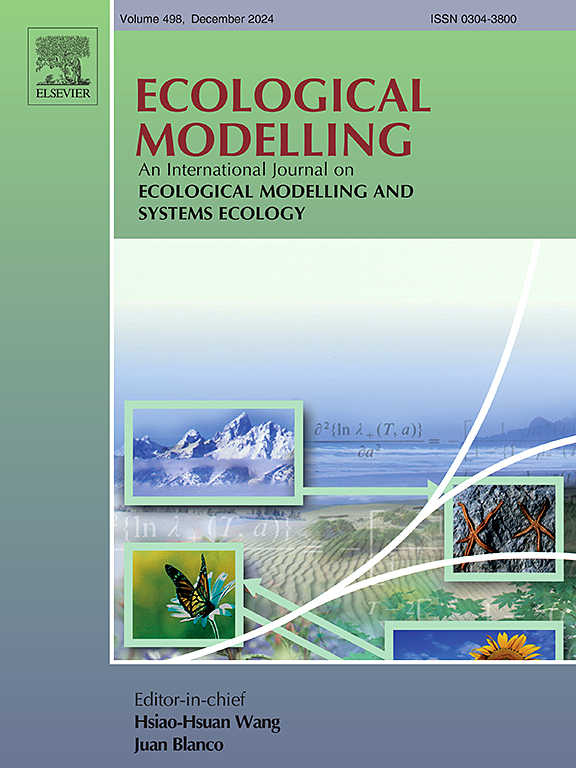Cracking the code: Linking good modeling and coding practices for new ecological modelers
IF 2.6
3区 环境科学与生态学
Q2 ECOLOGY
引用次数: 0
Abstract
Good modeling practices are essential for producing reliable and reproducible ecological models. Inherent to good modeling practices are fundamental coding and documentation skills, which not only implement the desired modeling capabilities but also clearly outline the goals, methods, and components of a model that are necessary to reproduce the desired results. One of the largest challenges for new ecological modelers can be implementing a model into computer code. In fact, coding represents a significant barrier for entry into ecological modeling, since most ecologists have not had formal training in computer science or software development. While software packages do exist that facilitate model development, we have observed that newer modelers still struggle with developing good coding practice throughout the modeling process. During a series of agent-based modeling short-courses and full semester graduate courses, both taught in NetLogo, we identified some common challenges encountered by graduate students and environmental professionals as they learn to code an ecological model, many for the first time. We were able to categorize and provide examples of the main challenges and obstacles, which fell into three main groups that follow the steps of good modeling practice: problem scoping and conceptualization, formulation, and evaluation. We then provide guidance on how to overcome these obstacles while developing good coding and modeling practices that will result in more scientifically defensible models.

破解代码:为生态建模新手提供良好的建模和编码实践
良好的建模实践对于制作可靠、可重现的生态模型至关重要。良好的建模实践离不开基本的编码和文档编制技能,这些技能不仅能实现所需的建模功能,还能清晰地勾勒出模型的目标、方法以及重现所需的结果所必需的组成部分。对于生态建模新手来说,最大的挑战之一可能就是将模型转化为计算机代码。事实上,编码是进入生态建模的一大障碍,因为大多数生态学家都没有接受过计算机科学或软件开发方面的正规培训。虽然确实有软件包可以促进模型开发,但我们注意到,在整个建模过程中,较新的建模者仍在努力发展良好的编码实践。在一系列基于代理建模的短期课程和全学期研究生课程(均使用 NetLogo 教学)中,我们发现了研究生和环境专业人员在学习生态模型编码时遇到的一些共同挑战,其中许多人是第一次学习。我们能够对主要挑战和障碍进行分类并提供实例,这些挑战和障碍主要分为三组,它们遵循良好建模实践的步骤:问题范围和概念化、制定和评估。然后,我们就如何克服这些障碍提供了指导,同时制定了良好的编码和建模实践,从而使模型更具科学性。
本文章由计算机程序翻译,如有差异,请以英文原文为准。
求助全文
约1分钟内获得全文
求助全文
来源期刊

Ecological Modelling
环境科学-生态学
CiteScore
5.60
自引率
6.50%
发文量
259
审稿时长
69 days
期刊介绍:
The journal is concerned with the use of mathematical models and systems analysis for the description of ecological processes and for the sustainable management of resources. Human activity and well-being are dependent on and integrated with the functioning of ecosystems and the services they provide. We aim to understand these basic ecosystem functions using mathematical and conceptual modelling, systems analysis, thermodynamics, computer simulations, and ecological theory. This leads to a preference for process-based models embedded in theory with explicit causative agents as opposed to strictly statistical or correlative descriptions. These modelling methods can be applied to a wide spectrum of issues ranging from basic ecology to human ecology to socio-ecological systems. The journal welcomes research articles, short communications, review articles, letters to the editor, book reviews, and other communications. The journal also supports the activities of the [International Society of Ecological Modelling (ISEM)](http://www.isemna.org/).
 求助内容:
求助内容: 应助结果提醒方式:
应助结果提醒方式:


